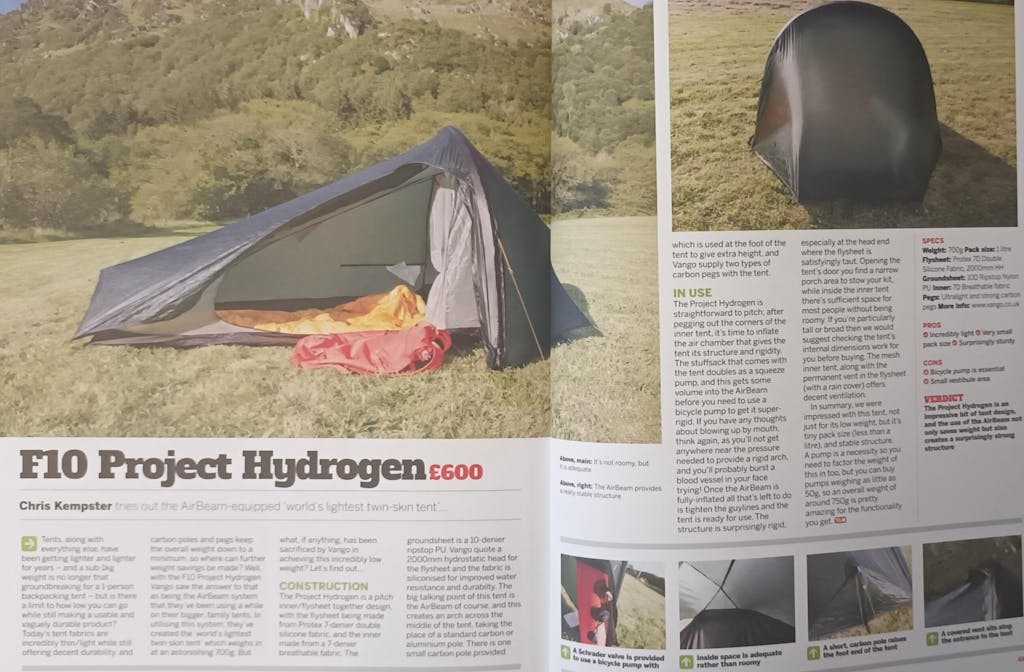VANGO F10 Hydrogen Air Tent
Posted by Trek & Mountain on Sep 10, 2022

Tents, along with everything else, have been getting lighter and lighter for years and a sub-1kg weight is no longer that groundbreaking for a 1-person backpacking tent - but is there a limit to how low you can go while still making a usable and vaguely durable product? Today's tent fabrics are incredibly thin/light while still offering decent durability, and carbon poles and pegs keep the overall weight down to a minimum, so where can further weight savings be made? Well, with the F10 Project Hydrogen Vango saw the answer to that as being the AirBeam system that they've been using a while on their bigger, family tents. In utilising this system, they've created the 'world's lightest twin-skin tent' which weighs in at an astonishing 700g. But what, if anything, has been sacrificed by Vango in achieving this incredibly low weight? Let's find out...
CONSTRUCTION
The Project Hydrogen is a pitch inner/flysheet together design, with the flysheet being made from Protex 7-denier double silicone fabric, and the inner made from a 7-denier breathable fabric. The groundsheet is a 10-denier ripstop PU. Vango quote a 2000mm hydrostatic head for the flysheet and the fabric is siliconised for improved water resistance and durabilty. The big talking point of this tent is the AirBeam of course, and this
creates an arch across the middle of the tent, taking the place of a standard carbon or aluminium pole. There is one small carbon pole provided which is used at the foot of the tent to give extra height, and Vango supply two types of carbon pegs with the tent.
IN USE
The Project Hydrogen is straightforward to pitch; after pegging out the corners of the inner tent, it's time to inflate the air chamber that gives the tent its structure and rigidity. The stuffsack that comes with the tent doubles as a squeeze pump, and this gets some volume into the AirBeam before you need to use a bicycle pump to get it super- rigid. If you have any thoughts about blowing up by mouth, think again, as you'll not get anywhere near the pressure needed to provide a rigid arch, and you'll probably burst a blood vessel in your face trying! Once the AirBeam is fully-inflated all that's left to do is tighten the guylines and the tent is ready for use. The structure is surprisingly rigid, especially at the head end where the flysheet is satisfyingly taut. Opening the tent's door you find a narrow porch area to stow your kit, while inside the inner tent there's sufficient space for most people without being roomy. If you're particularly tall or broad then we would suggest checking the tent's interal dimensions work for you before buying. The mesh inner tent, along with the permanent vent in the flysheet (with a rain cover) offers decent ventilation. In summary, we were impressed with this tent, not just for its low weight, but it's tiny pack size (less than a litre), and stable structure. A pump is a necessity so you need to factor the weight of this in too, but you can buy pumps weighing as little as 50g, so an overall weight of around 750g is pretty amazing for the functionality you get.
